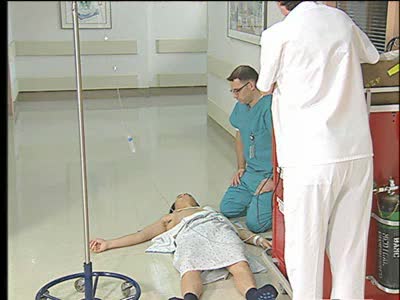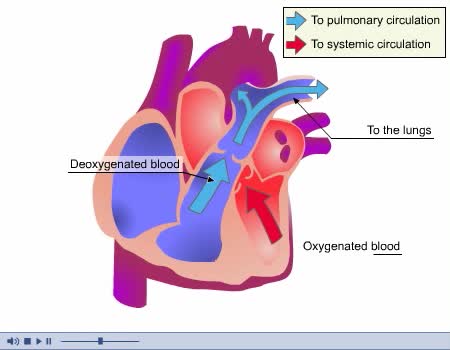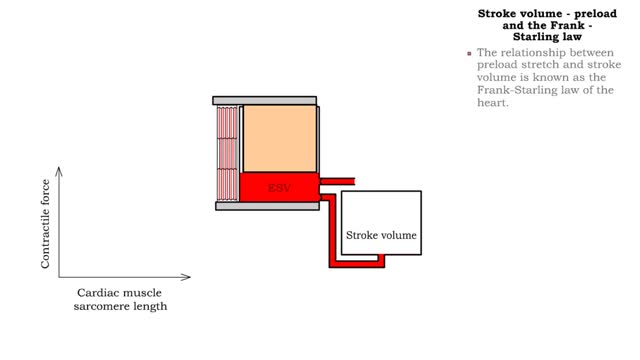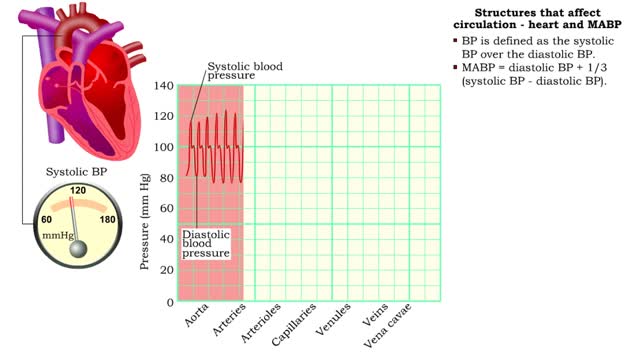Search Results
Results for: 'ventricular systole'
Automated external defibrillator (AED)
By: Administrator, Views: 14808
An automated external defibrillator (AED) is a portable electronic device that automatically diagnoses the life-threatening cardiac arrhythmias of ventricular fibrillation and pulseless ventricular tachycardia, and is able to treat them through defibrillation, the application of electricity which...
Coaductile pathway, Timing of contraction signal & Conduction system and ECG
By: HWC, Views: 11855
• When the system is healthy, the signal to contract the entire conduction system originates in the SA node - known as the heart's pacemaker. • The SA node triggers contraction because it depolarizes at a faster rate than other parts of the conduction system. • The wave of excitation fr...
Stroke volume - afterload definition & hypertension
By: HWC, Views: 11028
• Pressure (or other resisting force) that ventricles must overcome to push open semilunar valves and eject blood. ▪ Normally, the left ventricle blood pressure must overcome arterial pressure in the aorta. ▪ Abnormally high blood pressure, or hypertension, increases aortic pressure w...
Stroke volume - preload, sarcomere length and Frank -Starling law
By: HWC, Views: 11273
• Sarcomere length affects muscle tension and the force of contraction. • Increased muscle stretch (increased sarcomere length) at the beginning of contraction increases tension produced during the contraction. • A more forceful contraction ejects more blood, thus increasing stroke volu...
Structures that affect circulation - heart and MABP
By: HWC, Views: 11197
■ BP is defined as the systolic BP over the diastolic BP. ■ MABP = diastolic BP + 1/3 (systolic BP - diastolic BP). ■ MABP accounts for diastole lasting longer than systole; mean is not equidistant between the two pressures.
Structures that affect circulation - heart and systolic/diastolic BP
By: HWC, Views: 11559
• Heart generates blood pressure. • Arterioles produce resistance thereby regulating blood flow to tissues. • Veins store blood; kidneys regulate blood volume; both affect venous return and cardiac output. ■ Contractions of the ventricles determine blood pressure, which drives th...
By: Administrator, Views: 14467
An electrocardiogram (ECG or EKG) is a test that checks how your heart is functioning by measuring the electrical activity of the heart. With each heartbeat, an electrical impulse (or wave) travels through your heart. This wave causes the muscle to squeeze and pump blood from the heart. Sinoat...
Depolarization of the SA node, Action potentials of the myocardium & ANS effects
By: HWC, Views: 11529
• A typical contractile cell in the myocardium has a resting membrane potential. • The resting membrane potential of cells in the SA node is not fixed, and is known as the pacemaker potential. • The action potential of a healthy SA nodal cell has three parts: • Pacemaker potential: ...
Advertisement











